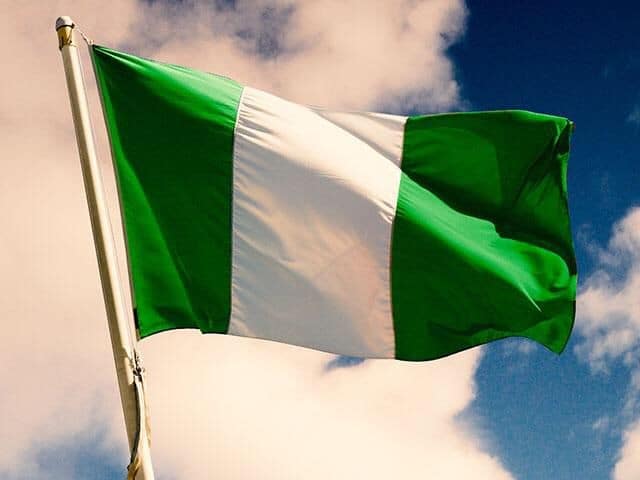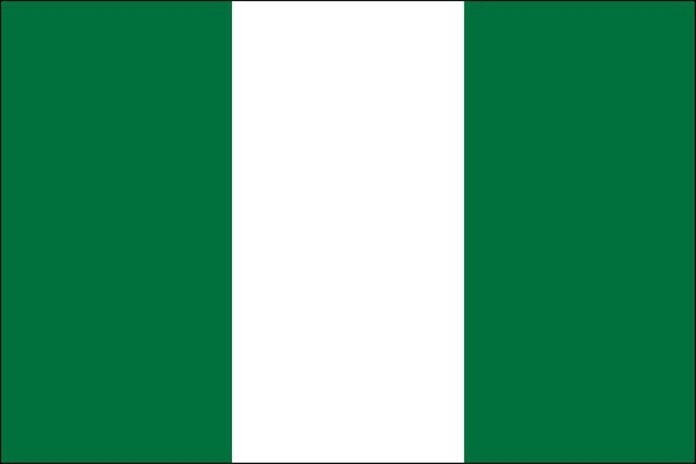The Nigerian flag carries a powerful message that defines the history of the Nigerian people. It is a unique and beautiful national symbol representing Nigeria’s sovereign state and its authority.

According to Wikipedia, a flag is a piece of fabric with a distinctive design and colour. It is used as a symbol, a signalling device or for decoration.
The Nigerian flag is a rectangular piece of fabric with three vertical bands of green, white, and green. It was designed in 1959 and was first officially hoisted on October 1st 1960 when Nigeria gained its independence from the British colony.
This article contains everything you need to know about the Nigerian flag, so stick with us.
Who Designed the Nigerian Flag?
The Nigerian flag is an adaptation of a captivating entry from Michael Taiwo Akinkunmi in a competition that was held in 1959. At the time, Michael Taiwo Akinkunmi was studying at Norwood Technical College in London when he saw a newspaper advert that submissions were being accepted for the design of a new national flag of Nigeria.
The then 23-year-old boy submitted a tri-band design that consisted of a white vertical band in the centre with a green vertical band on its sides and a radiating red sun in the white vertical centre of the flag.
Michael Taiwo Akinkunmi won the contest. However, his version of what would have been the Nigerian flag today was modified. The Red Sun was removed, leaving only a green and white tri-band flag which is what is known as the national flag to date.

The name Michael Taiwo Akinkunmi OFR, who was born on May 10 1936, is forever written in the sand of time as the man who gave Nigeria its primary national symbol.
HAVE YOU READ: Nigerian National Anthem: All You Need to Know

When Was the Flag Designed?
The Nigerian flag was designed in 1959 during the contest but was first officially launched on October 1st 1960, the day Nigeria gained independence.
Description of the Nigerian Flag
The flag is primarily made up of two colours, green and white. The Nigerian national flag is divided vertically into three equal parts. The central part is white, and the two other parts are green. The white is immaculately white, while the green is emerald green, popularly known as Nigerian Green.
The proportion of each colour are equal, and they both have their significance.
SEE: Funniest Nigerian Traffic Rules
Significance of Each Color on the Flag
The colours on the flag are not just ordinary colours as they may seem. They each have what they represent.
The emerald green colour symbolizes the fertile land and agricultural diversity of the Land.
The white colour represents peace and unity. lt also symbolizes River Niger bisecting the countryside
The national flag of Nigeria truly reflects the Nigerian nationalistic fervour and sentiments.
SEE ALSO: Popular Nigerian Childhood Myths
Rules Guiding the Use of The Nigerian Flag
The national flag is one of the primary symbols of the country. It represents the authority of the country and so should be treated with the utmost respect by the citizens. For this reason, the Federal government put some rules and regulations in place to guard the use and display of the Nigerian flag. These rules include but are not limited to the following:
1. When the national flag is carried in a procession, the bearer of the flag should be neatly and properly dressed and must be positioned at the front of the procession.
2. When there is more than 1 flag, but the other flags are not national flags, the Nigerian national flag must be in the front and at the centre of all other flags in the procession.
3. When did national flag is in a room or hung anywhere, no other flag, emblem or insignia must be placed higher than the national flag.
4. Old and worn-out flags must never be displayed. When a flag becomes torn, soiled, or old, the cloth should be destroyed by burning or any other method with decorum and respect.
5. The national flag is usually flown at the peak of the hoist, except on memorial days or during state funerals and national catastrophes when it is flown at half-mast as a sign of respect
6. A flag must always be mounted vertically. Only on rare occasions can a flag be used horizontally or laid flat. A licence must be granted by the government before this is done.
7. Only special dignitaries like the president, vice president, state governors, deputy governors, and chief justice of the federation are allowed to display the national flag on vehicles. And even on such occasions, the flag must be placed on the radiator cap or attached to the right fender of the vehicle chassis.
8. When mounting the national flag, it should be ceremoniously flown in the morning at sunrise and lowered at sunset. The national flag does not sleep.
9. It is an offence for the national flag to be improperly used or displayed. According to section 5 of the law, “any person who flies or exhibits the national flag in a defaced or bad condition shall be guilty of an offence against this ordinance.”
10. The presidential flag, which is reserved for use by the president of Nigeria, is different from the flag used by the masses. This flag has the Nigerian coat of arms at the centre of the tri-band.

SEE THIS: Know More About the 36 States and Capitals in Nigeria
Punishment For Improper Use of The Nigerian Flag
When there is an offence, there is a corresponding punishment. On any occasion where the flag is not used properly, it attracts a fine of one hundred thousand naira.
Read More:
FAQs about the Nigerian Flag
Even though the Nigerian flag is tri-band, it is made up of just two colours; green and white. This makes the Nigerian flag bicoloured.
The Nigerian flag has remained unchanged and unmodified since it was officially launched on October 1st, 1960. Nigeria does not have 2 flags.
National symbols are unique to each country. They represent a country and its people, their traditions, history, values, morals, and culture.
The Nigerian national symbols are;
1. The Nigerian Coat of Arm
2. The Nigerian Flag
3. The Nigerian National Currency
4. The Nigerian National Anthem
5. The Nigerian National Pledge
6. The Nigerian Passport
7. The Nigerian National Identity Card.
The Nigerian Naira, NGN, is the official currency of the Federal Republic of Nigeria.
In conclusion, the Nigerian National flag is truly a symbol to be treated with utmost respect and reverence. It tells the history of a people and their aspirations.





